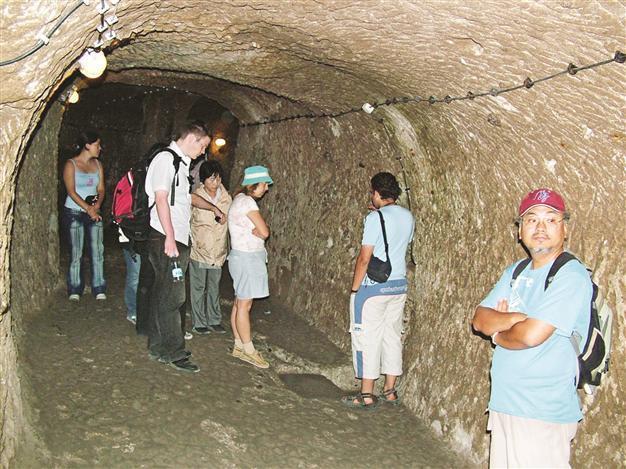Cappadocia reveals new riches
NEVŞEHİR - Doğan News Agency

The underground settlements in Cappadocia, used by Christians in the past, have been rediscovered in the 1960s and opened to tourists by the Culture and Tourism Ministry. They are one of the main tourist destinations in Turkey’s Central Anatolian region.
Long on the tourist trail thanks to its natural and cultural riches, both above and below the ground, the Central Anatolian region of Cappadocia might have even more offer to future generations, thanks to the findings of new archaeological excavations, according to the head of a local foundation.
There are nearly 200 known underground cities in the Cappadocia region, said Mustafa Durmaz, the head of the Göreme Tourism Development Foundation. “I believe the number of underground cities will increase with effective scientific research. We can learn a lot if we take into consideration the huge number of underground cities in Derinkuyu.”
The underground settlements in Cappadocia are one of the main tourist destinations in the Central Anatolian region. Dating back to 3,000 B.C., the underground cities are most famous for having been used by early Christians as hiding places to escape the Romans. The neglected underground cities were rediscovered in the 1960s and soon opened to tourists by the Culture and Tourism Ministry. The Derinkuyu, Tatlarin, and Özkonak underground cities are among the cities that are open to both local and foreign visitors thanks to their magnificent features, Durmaz said.
Derinkuyu is uniqueDerinkuyu, which is located 29 kilometers from the provincial center of Nevşehir, descends eight stories, or 85 meters, below the ground. The city has dining rooms, kitchens, wine-making houses, barns and a school, which the other underground cities do not have. The city’s church is located on the second story below ground.
“The underground cities are one of the most significant attractions [in Turkey] thanks to their unique features,” Durmaz said, noting that the Hittites also inhabited one-story underground dwellings. “Depending on their size, the [cities] could shelter from 10,000 to 30,000 people for between two and six months in the event of an enemy attack. Tourists visiting Cappadocia never leave the region without seeing one of the underground cities. We can promote these underground settlements to a wider audience and make them the best-known tourist destinations in the country with effective advertising.” The underground cities draw many foreign tourists due to their sense of mystery as well, he said.
